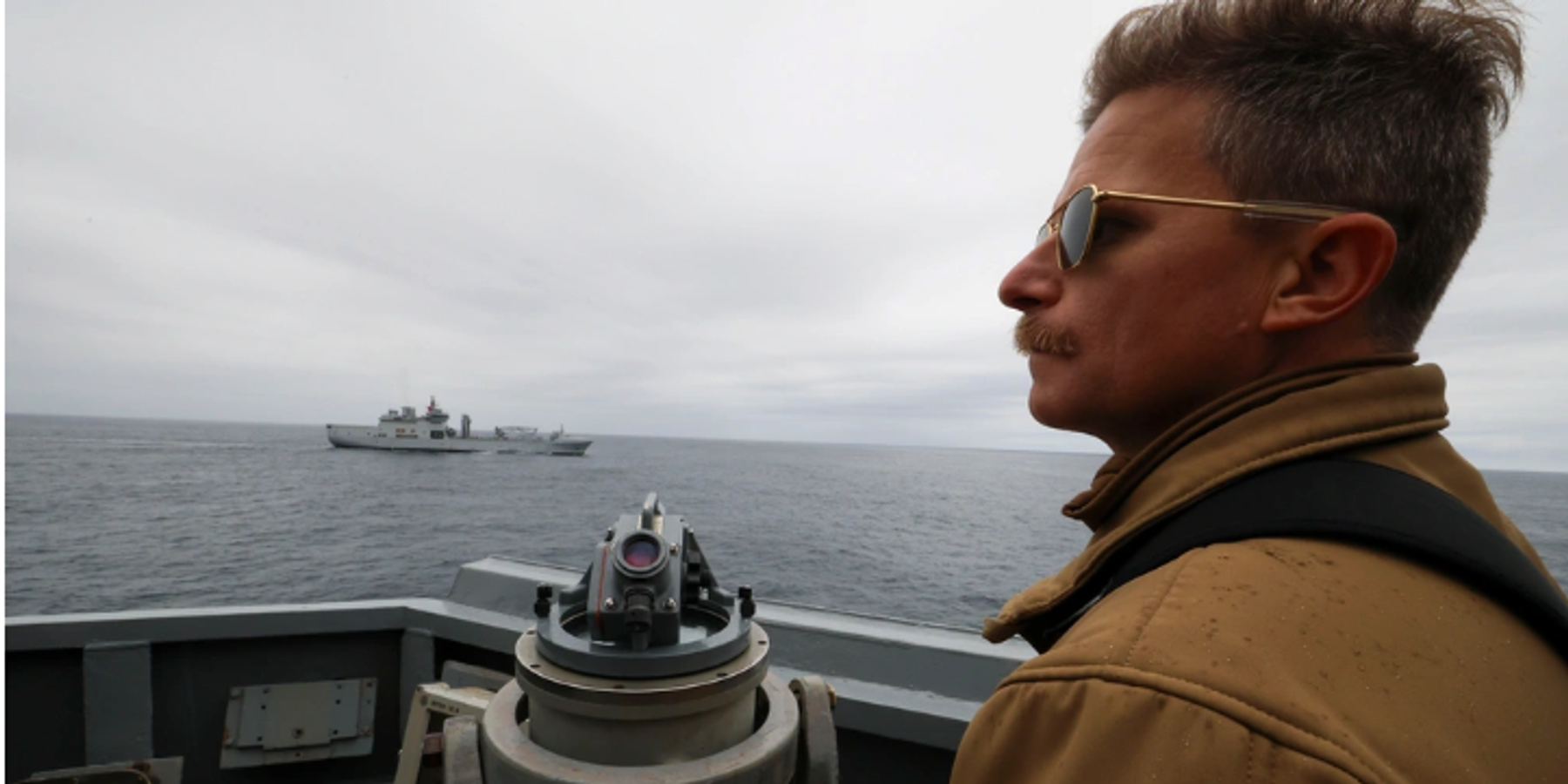An ongoing Great Power tit-for-tat in which U.S./NATO and Russian warships and planes approach each other’s territories in the Arctic, suggests a sense of growing instability in the region.
This uptick in military activities risks the development of a security dilemma: one state or group of states increasing their security presence or capabilities creates insecurity in other states, prompting them to respond similarly.
The most recent example is a recent U.S.-Norwegian joint patrol on Russia’s maritime border in the Barents Sea. The August 29 operation marks the third time in five years that the U.S. Navy has entered the Barents Sea. In 2020, the U.S. Navy had entered this region for the first time since the 1980s.
“Credible naval forces operating in the Arctic ensure the ability to deter competitors and rapidly respond to crises in the region,” U.S. Fleet Forces Command wrote about the most recent operation.
The U.S. Arleigh Burke-class guided missile destroyers USS Mahan (DDG 72) and USS Bainbridge (DDG 96), Royal Norwegian Navy Fridtjof Nansen-class frigate HNoMS Thor Heyerdahl (F-314), and Royal Norwegian replenishment oiler HNoMS Maud (A-530), took part in the maneuvers. The flotilla is part of a group supporting the USS Gerald R. Ford, the world’s largest aircraft carrier.
One week before the U.S.-Norway patrol, U.S., U.K. and Norwegian P-8 Poseidon anti-submarine warfare (ASW) planes responded to a potential threat from Russian Yasen-class attack submarines spotted around the USS Gerald R. Ford in the Norwegian and North Seas. The Yasen class is Russia’s newest nuclear-powered cruise missile submarine. They are designed to carry the Zircon hypersonic cruise missile.
The Barents Sea is in the European Arctic and divided between Russian and Norwegian territorial waters. The area is militarily sensitive for Russia as it is home to several Russian strategic air bases as well as the headquarters of the Northern Fleet. The Barents region was the setting for two invasions of Russia by Western troops in the twentieth century: British, American, and French troops intervened in the Russian Civil War by occupying Murmansk and Arkhangelsk, and Nazi Germany and Finland invaded the Soviet Arctic during World War II.
Countering Russia and China
President Trump’s rhetoric on acquiring Greenland and Russian and Chinese ships “all over the place” near that island, coupled with the 2025 Annual Threat Assessment (in which the Arctic is mentioned 14 times), demonstrates that the U.S. regards the Arctic as a strategic priority.
Official documents, including the 2024 Pentagon Arctic Strategy, draw attention to Russian and Chinese activities, and the two countries’ cooperation, in the Arctic as the top threats to regional stability.
In recent years, Russia and China have indeed been increasing their security cooperation in the Arctic, too.
In July 2024, Russian and Chinese bombers conducted joint drills over the Chukchi and Bering Seas and the northern Pacific Ocean, marking the eighth patrol since 2019 and the first within Alaska’s Air Defense Identification Zone (ADIZ). The aircraft did not enter U.S. or Canadian sovereign airspace and were not seen as a threat, according to NORAD.
In September 2024, the Russian Navy and China’s People's Liberation Army Navy carried out their largest joint naval exercises since the 1990s, dubbed “Ocean-2024.” The return of such “Cold War-era practices” was reported by Russian media as a response to rising tensions with the U.S.
These exercises spanned the Pacific and Arctic Oceans, as well as the Mediterranean, Caspian, and Baltic Seas. The U.S. Army deployed troops and rocket launchers to the far tip of Alaska as a reacting show of force.
Norway as NATO’s “tip of the spear”
The U.S.-Norway operation is just the latest development that shows the Arctic is becoming a more geopolitically significant region for the U.S. and NATO. On August 9, NATO Joint Air Command announced the deployment of three B-1B Lancer strategic bombers of the U.S. Air Force to the Ørland Air Base in Norway. The announcement came shortly after the U.S. sent a WC-135R “nuke sniffer” aircraft close to Russia's strategic bases in the Barents region.
On August 31, 2025, Norway and the U.K. signed a strategic partnership agreement that includes the purchase of at least five frigates “to better counter Russia on NATO’s northern flank.” The deal is Norway’s biggest ever military investment, valued at almost $14 billion. Russian diplomats argue that NATO’s efforts to militarize the Arctic are primarily driven by the U.K.
At the end of August 2025, U.S. aircraft made four interceptions of Russian surveillance flights day off the coast of Alaska. NORAD announced that such Russian activity happens regularly and is not seen as a threat. On September 3, 2025, an RQ-4 Global Hawk remote-operated surveillance drone flew along the Norwegian and Finnish borders with Russia, flying over Norway’s Finnmark region for the first time. Thomas Nilsen of the Barents Observer described the “highly unusual move” as a Strategic Communication to Russia.
Diplomatic Solutions
This dangerous spiral demonstrates the need for restraint and diplomatic solutions. These include confidence building measures, military-to-military dialogue, trust-building, and additional measures to reduce the risk of escalation in the region. Such measures are necessary to clarify the intentions behind peace-time military activities.
The availability of complete Automatic Identification System (AIS) data during military exercises in the region would be one such measure to improve transparency. Another could be the establishment of a military code of conduct for the Arctic to define what is tolerable and unacceptable military activity in the region.
Competition between the U.S. and Russia in the Arctic should not be considered an imperative. The Cold War is over. We should be leaning into opportunities that normalize U.S.-Russia relations, not make existing tensions permanent.


 Top photo credit: Ngô Đình Diệm after being shot and killed in the 1963 coup (US National Archives)
Top photo credit: Ngô Đình Diệm after being shot and killed in the 1963 coup (US National Archives) 












